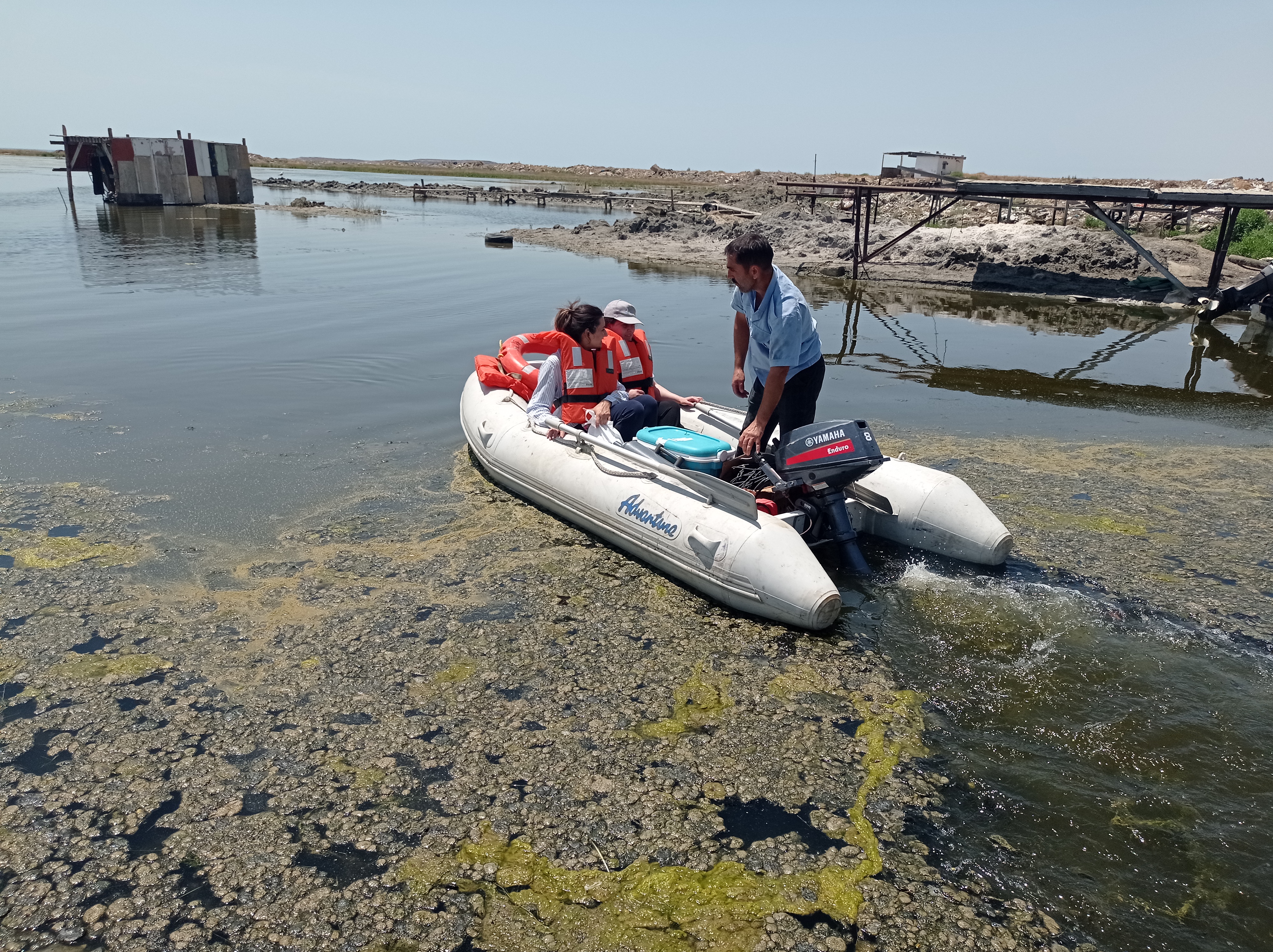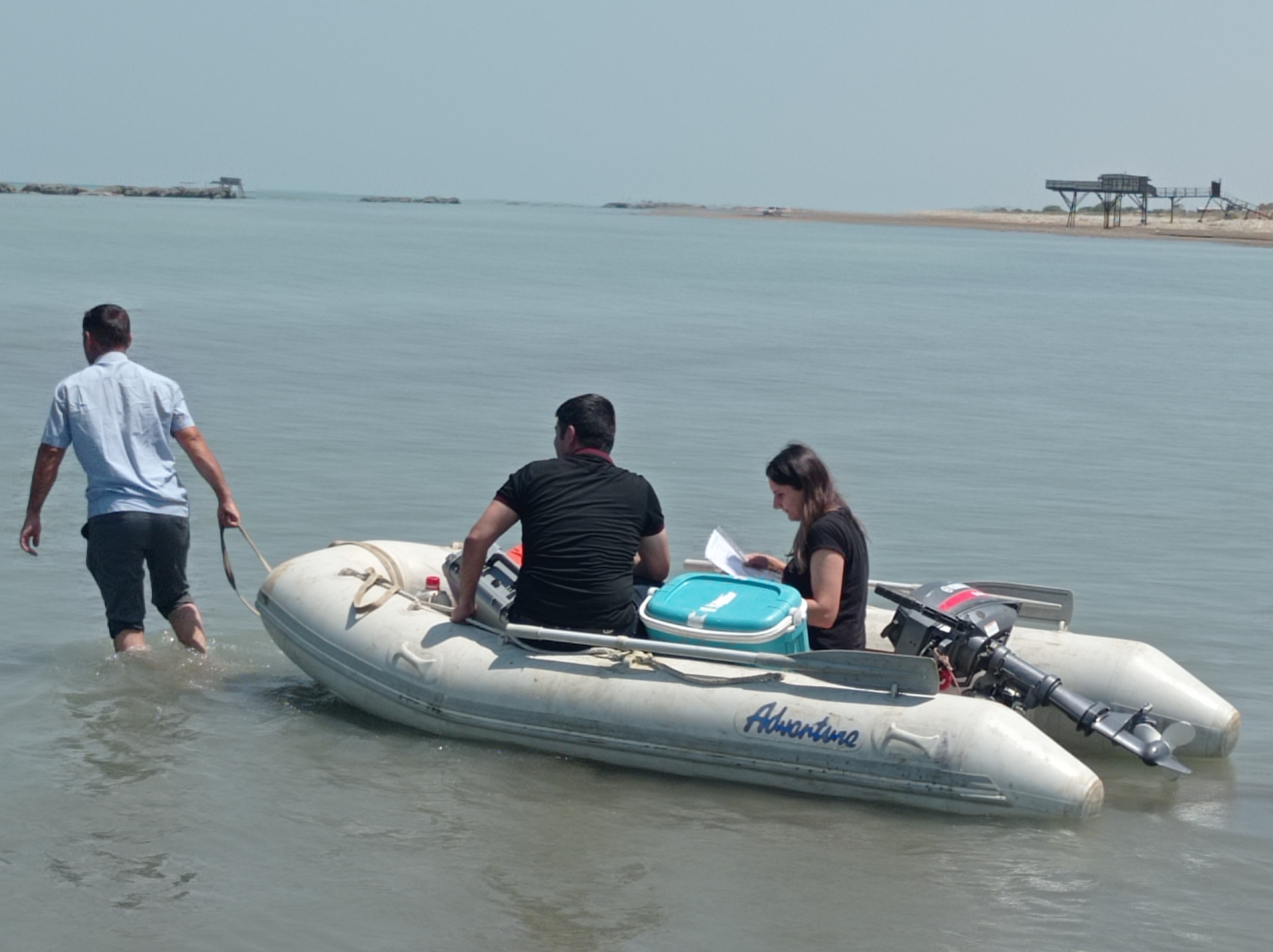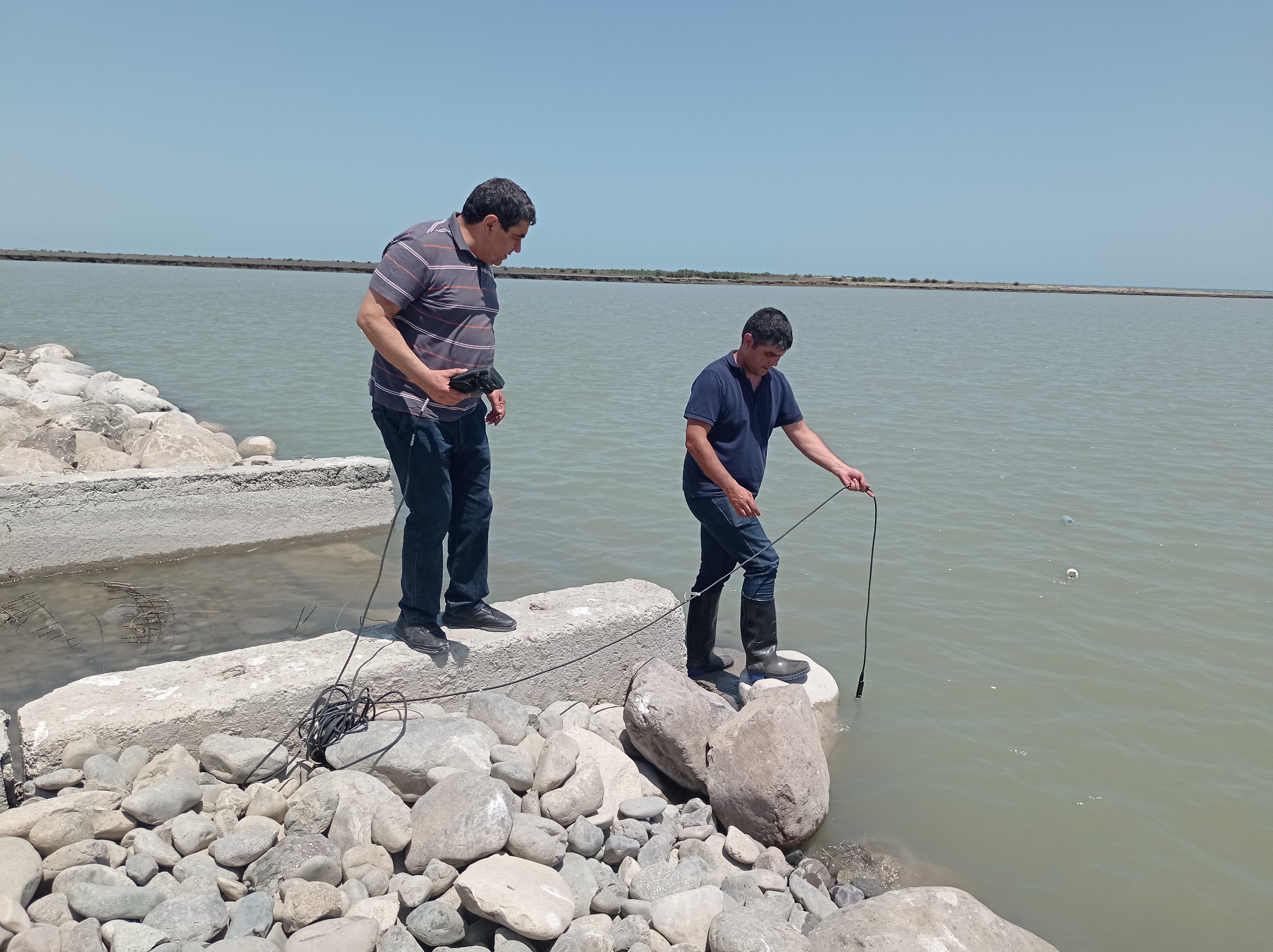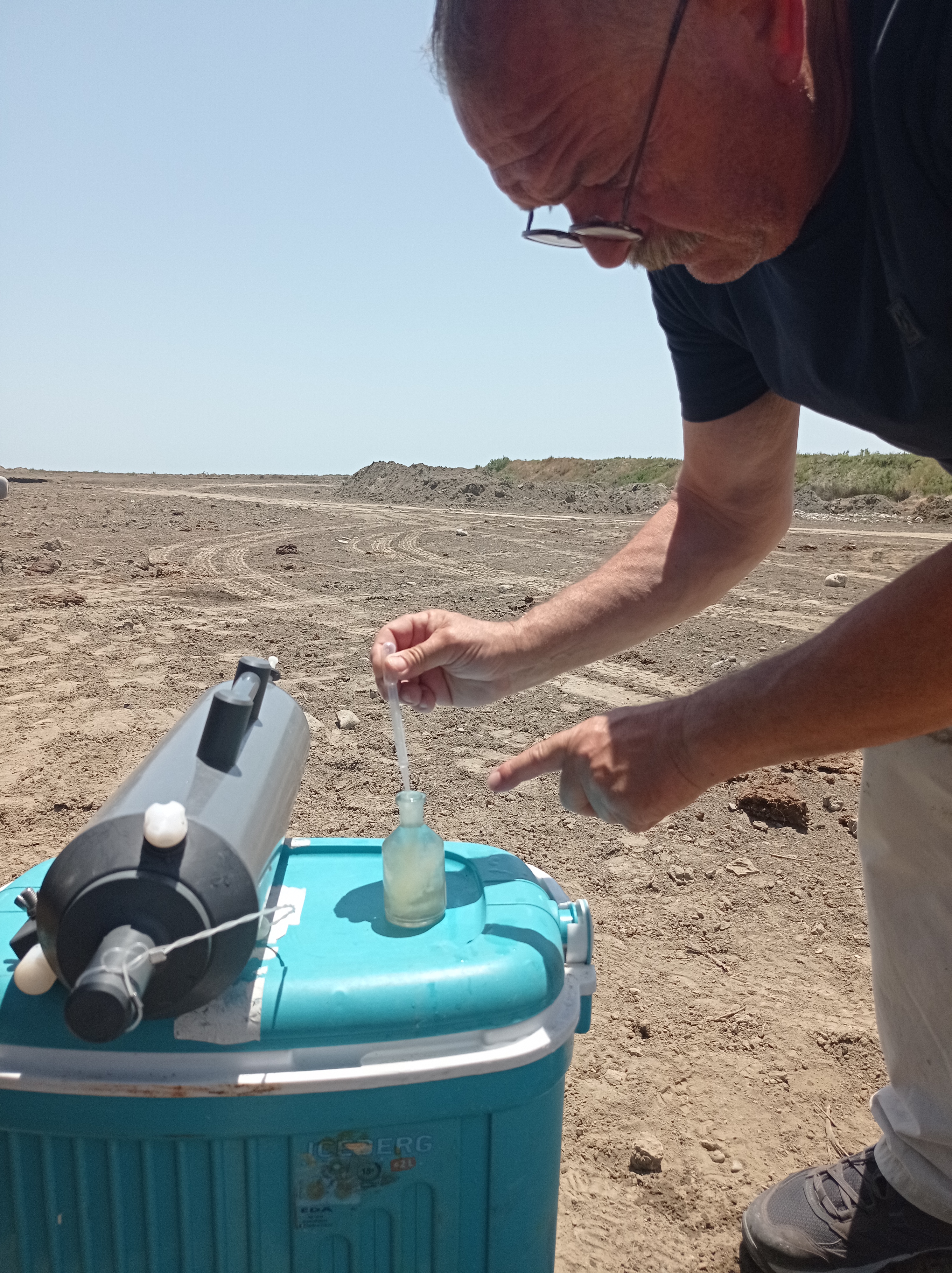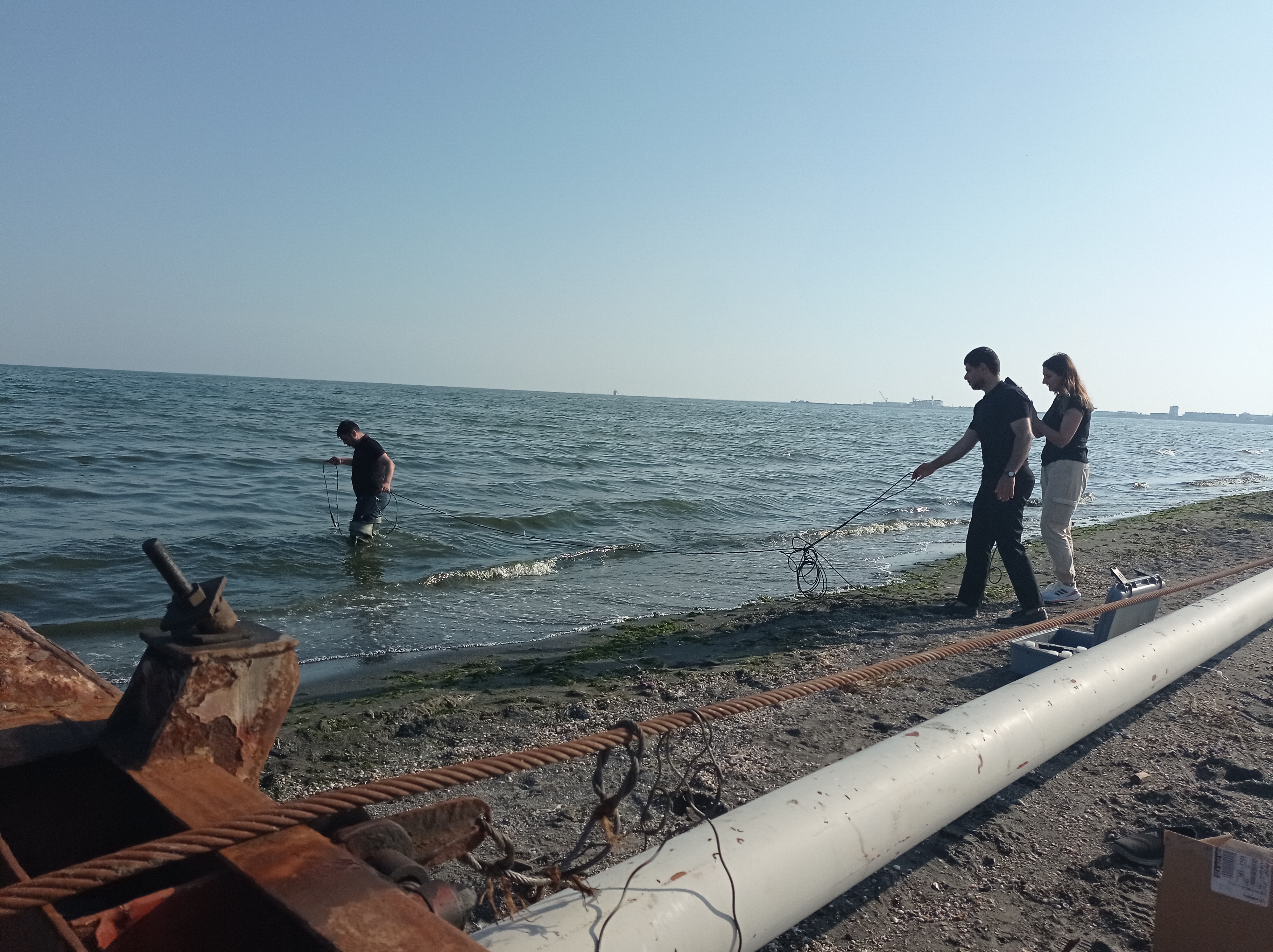The survey aimed to assess the impact of human pressures on Coastal and Transitional waters in Azerbaijan. It was organised from 12 to 16 June 2023 and followed a previous survey that took place in October 2022. Both surveys were organised in the frame of the EU4Environment Water and Data programme.
Coastal and transitional water are at the interface between freshwater and the sea. Coastal and Transitional waters belong to the most productive ecosystems of the world, and they are also the sites of major cities and ports. For this reason, pollution and deterioration of marine habitats are very common.
For 5 days, samples of water were taken in several locations in areas where the Kura river meets the Caspian Sea: Shurabad, Turkan, Baku Bay, and the Kura Delta.
The survey aimed to examine the eutrophication in the Baku Bay caused by wastewater. The survey also aimed to set up specific thresholds (high/good/moderate) for parameters investigated. Such thresholds are essentials to develop reliable indicators in order to assess the ecological status of the coastal and transitional waters.
Different parameters were measured in water. Temperature, salt levels and turbidity were measured in situ at 24 stations. And 36 probes in total were taken to measure dissolved oxygen, nutrients (nitrate, nitrite, ammonia, and orthophosphate) and phytoplankton in a laboratory.
Physical measurements (temperature, salt levels, etc) are very important for the evaluation of chemical results. For example, a high nutrient concentration established in freshwater where salinity is low can be absolutely normal while the same concentration of nutrients found in the Caspian seawater with a higher salinity can be a strong indicator of eutrophication.
With the support of a Croatian expert, Azerbaijani experts could investigate five coastal, one transitional, and one artificial water body. The water body is a coherent sub-unit in the river basin to which the environmental objectives of the EU Water Framework Directive must apply.
The EU Water Framework Directive (WFD), adopted in 2000, takes a pioneering approach to protecting water based on natural geographical formations (river basins). To achieve a good status of water, water monitoring methods should not only assess chemical and physical parameters, but also biological and other parameters. Assessing the ecological status of water is a first step towards taking better account of ecosystem needs.
Credit pictures: Grozdan Kuspilic.
1 Baku Bay - 2 Shurabad - 3,4,5,6 water sampling - 7 Turkan near Baku


